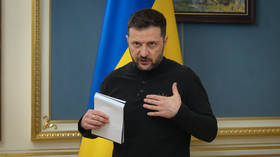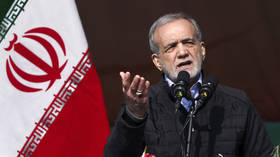Last nail in petrodollar coffin? Gazprom could help Russia shift away from greenback

Energy giant Gazprom could become the first Russian company to exclude the US dollar from its foreign trade operations. It aims to switch to Russian rubles and other national currencies in payments for energy supplies.
Gazprom’s Deputy Chairman Andrey Kruglov told reporters that one of the world’s largest gas companies is already settling contracts in national currencies, namely in rubles and yuan, when supplies are exported to China.
Gazprom is ready to launch large-scale gas supplies to the Chinese market via the ‘Eastern Route’ (the Power of Siberia pipeline) as early as December 1, 2019. The Russian energy giant has a 30-year contract for the supply of an annual 1.3 trillion cubic feet of natural gas via the pipeline.
Also on rt.com Russia and China ditching dollar for national currencies payment system to avoid sanctionsGazprom’s CEO Alexey Miller said Russia and China have also agreed to get approval for gas supplies via the ‘Western Route’ in the shortest possible time.
Demand for Russian gas supplies is increasing in China, and, according to Miller, by 2035 it could reach 80-100 billion cubic meters a year. The transition to settlements in national currencies will greatly facilitate Russia-China trade as a whole, which has already hit $100 billion record mark and is expected to reach $200 billion by 2024.
READ MORE: China continues boosting gold reserves as part of its anti-dollar push
Moscow and Beijing are drafting a pact to increase the use of the ruble and the yuan in bilateral and international trade. The countries aim to cut reliance on the US dollar to avoid sanctions targeting financial transactions. The plan is to launch a new cross-border system for direct payments in national currencies.
Also on rt.com Russia to become China’s top supplier of gas soon
The sides have been successfully implementing the terms of the ruble-yuan currency swap agreement, clinched in 2014 to boost trade using national currencies and eliminate dependence on the dollar and euro. The deal was extended at the end of 2017.
For more stories on economy & finance visit RT's business section















